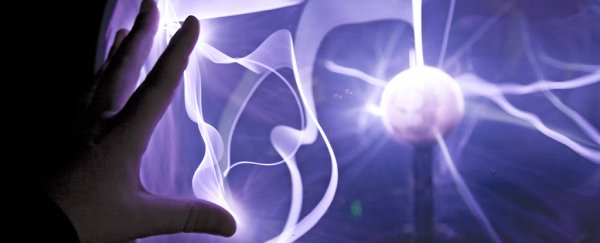Scientists have found evidence that a fundamental physical constant used to measure electromagnetism between charged particles can in fact be rather inconstant, according to measurements taken from a quasar some 13 billion light-years away.
Electromagnetism is one of the four fundamental forces that knit everything in our Universe together, alongside gravity, weak nuclear force, and strong nuclear force. The strength of electromagnetic interaction between elementary particles is calculated with the help of what's known as the fine-structure constant.
However, the new readings – taken together with other readings from separate studies – point to tiny variations in this constant, which could have huge implications for how we understand everything around us.
The latest data also show the Universe may have previously hidden 'north' and 'south' bearings, a definitive direction upon which these variations in electromagnetism can be mapped.
"[The new study] seems to be supporting this idea that there could be a directionality in the Universe, which is very weird indeed," says astrophysicist John Webb, from the University of New South Wales (UNSW) in Australia. "So the Universe may not be isotropic in its laws of physics – one that is the same, statistically, in all directions."
"But in fact, there could be some direction or preferred direction in the Universe where the laws of physics change, but not in the perpendicular direction. In other words, the Universe in some sense, has a dipole structure to it."
The electromagnetic force that surrounds us has a crucial role in tying electrons to nuclei inside atoms – without it, matter would simply disintegrate. It provides us with visible light, and is the main reason electricity works as it does.
Using images and data captured by the Very Large Telescope (VLT) in Chile, the research team was able to measure this force as it would've appeared in the Universe when it was much younger and closer to its beginnings.
The data require further testing and verification, but the team says that the current results raise a curious question: whether the idea of there being a 'Goldilocks' balance of fundamental forces – just perfect for life to be able to exist – actually applies throughout our Universe.
"Putting all the data together, electromagnetism seems to gradually increase the further we look, while towards the opposite direction, it gradually decreases," says Webb.
"In other directions in the cosmos, the fine structure constant remains just that – constant. These new very distant measurements have pushed our observations further than has ever been reached before."
That idea of directionality in the Universe has been backed by researchers working independently in the US, who have been busy looking at the nature of X-rays. They've also found a cosmic alignment that happens to point in the same way as the one the UNSW team has discovered.
As for what this means for physics on a broader scale, it's too early to say. The findings are absolutely worth further research at least, and mean the Grand Unified Theory - the search for one unifying force that can tie electromagnetism, weak and strong nuclear forces together - may even have to be shelved for a while.
Indeed, research published last year suggests there might be a fifth fundamental force to take into consideration. The further we look out into the Universe and the more we discover, the more complex and strange everything seems to get.
"Our standard model of cosmology is based on an isotropic universe, one that is the same, statistically, in all directions," says Webb. "That standard model itself is built upon Einstein's theory of gravity, which itself explicitly assumes constancy of the laws of nature."
"If such fundamental principles turn out to be only good approximations, the doors are open to some very exciting, new ideas in physics."
The research has been published in Science Advances.
